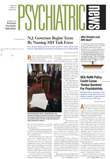The number of unintentional, alcohol-related deaths among U.S. college students rose significantly from 1998 to 2001, prompting researchers to call for expanded screening and treatment for college students with alcohol problems.
The number of college students aged 18 to 24 who died accidentally with alcohol as a contributing factor rose from 1,575 in 1998 to 1,717 in 2001, according to a study published in the 2005 edition of Annual Review of Public Health.
In addition, in both 1998 and 2001, more than 500,000 college students were unintentionally injured due to drinking, and 600,000 were assaulted by another student who was drinking.
“This is a very serious problem, and it's not getting any better,” Ralph Hingson, Sc.D., lead author of the study and a professor of public health at Boston University, told Psychiatric News.
Hingson and his colleagues from the Boston University School of Public Health analyzed a number of databases to learn more about the consequences of drinking among college students in 1998 and 2001.
Their figures were projected from combined data from the National Household Survey of Drug Abuse, Centers for Disease Control and Prevention, coroner reports, National Highway Traffic Safety Administration, and Department of Education.
Though the proportion of college students who reported that they drank heavily (defined as consuming five or more drinks on the same occasion in the previous month) stayed about the same in 1998 and 2001, the proportion of college students who drove under the influence of alcohol in the year previous to each study rose from 2,297,550 to 2,792,716, which can account for the rise in the number of alcohol-related motor vehicle crash deaths of college students, Hingson said.
“The magnitude of problems posed by excessive drinking among college students should stimulate both improved measurement of those problems and efforts to reduce them,” the authors stated in the article.
In addition to suggesting that every person who dies unnaturally in the United States be tested for alcohol, the authors recommended a number of strategies to reduce the number of alcohol-related deaths and injuries to young adults, such as greater enforcement of the minimum drinking age and“ zero tolerance” laws, which make it illegal for people under age 21 to drive after any drinking.
Other recommendations include more widespread implementation of alcohol screening and treatment programs that target young adults.
Hingson acknowledged that the problem does not lie with college students alone.
He pointed out that 18- to 24-year-olds who are not enrolled in educational institutions “account for more mortality and morbidity than college students do” because they are many more in number.
The number of 18- to 24-year-olds who are not college students and died due to an alcohol-related, unintentional injury was 5,367 in 2001.
In addition, Hingson noted, many problem-drinking behaviors start before people get into college. “It's a societal problem,” he said.
He also pointed out that unintentional injuries are the leading cause of death among people aged 1 to 34, and alcohol is the leading contributor to those injuries. “We hope that with these findings we can inspire communities to launch comprehensive interventions to stem drinking in these young people,” said Hingson.
An abstract of “Magnitude of Alcohol-Related Mortality and Morbidity Among U.S. College Students Ages 18-24: Changes From 1998 to 2001” is posted online at<arjournals.annualreviews.org/>.▪
